It’s not every day your nest gets struck by lightning. ⚡️
However, that’s exactly what happened to our featured patients this month: four nestling Red-headed Woodpeckers! 😮
Meet RWS patients 25-542, 543, 544, and 545. They were rescued in mid-July after a uniquely challenging start to life.
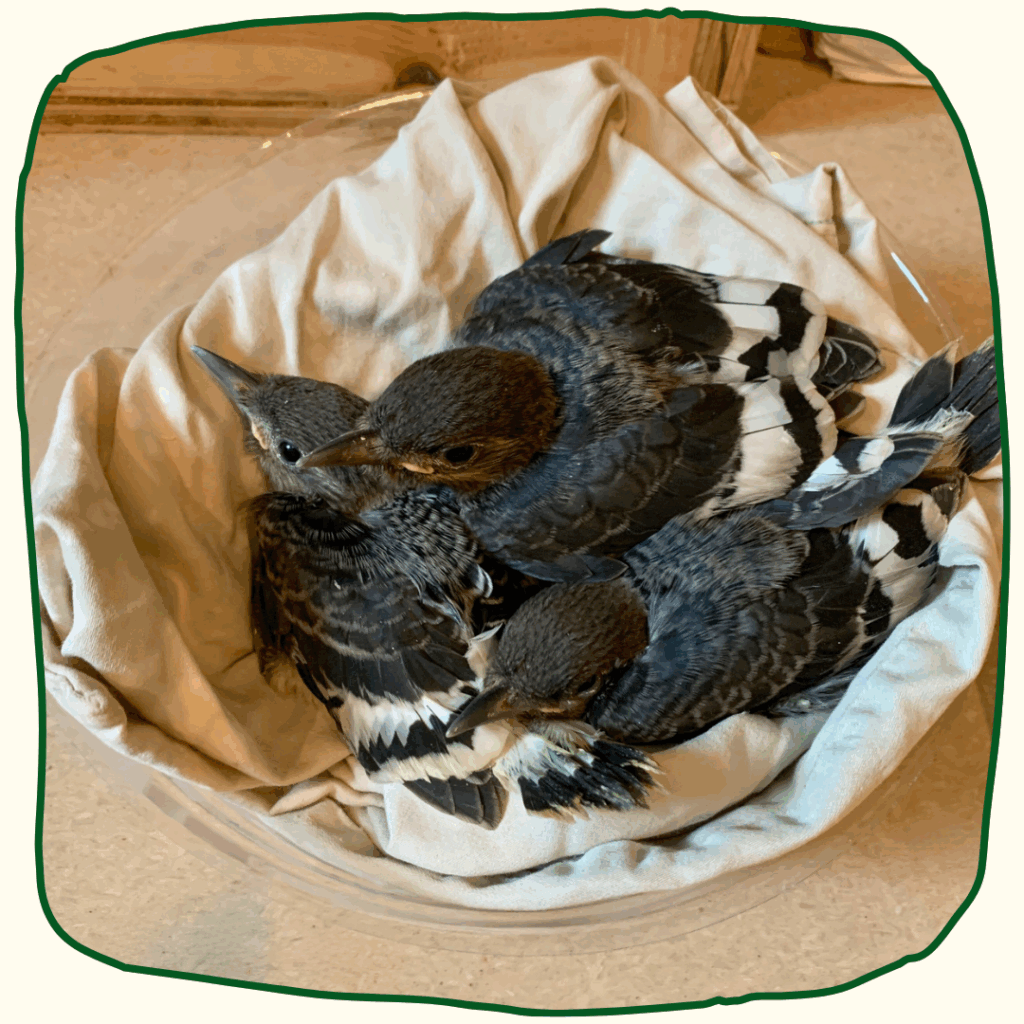
The Story Begins…
A kind-hearted couple in Appomattox County has loved watching a mated pair of Red-headed Woodpeckers nest on their property for a few years now. The woodpeckers have traditionally opted for a bluebird-sized nest box that they renovate by drilling the entry hole much larger with their beaks. 😂
The landowners decided to offer their avian neighbors a larger mounted nest box this year, which the woodpeckers took to right away. However, that’s when the first tragedy struck: wind knocked down the nest box, and the nest was a goner. Luckily, it was still early enough in the season for mom and dad to scout out a new spot and try again.

A Wild Rescue!
The parents-to-be then picked out a lovely dead pine tree for their nest. Their choice illustrates why it’s important to keep dead trees where they are, when it’s safe to do so. The ecological term for dead-but-still-standing trees is a snag, and snags play a crucial role in any balanced ecosystem. They provide housing for a variety of cavity-nesting birds and roosting areas for bats. Snags also contribute to nutrient cycling through decomposition and attract insects, thus attracting all kinds of insectivorous species…including woodpeckers!
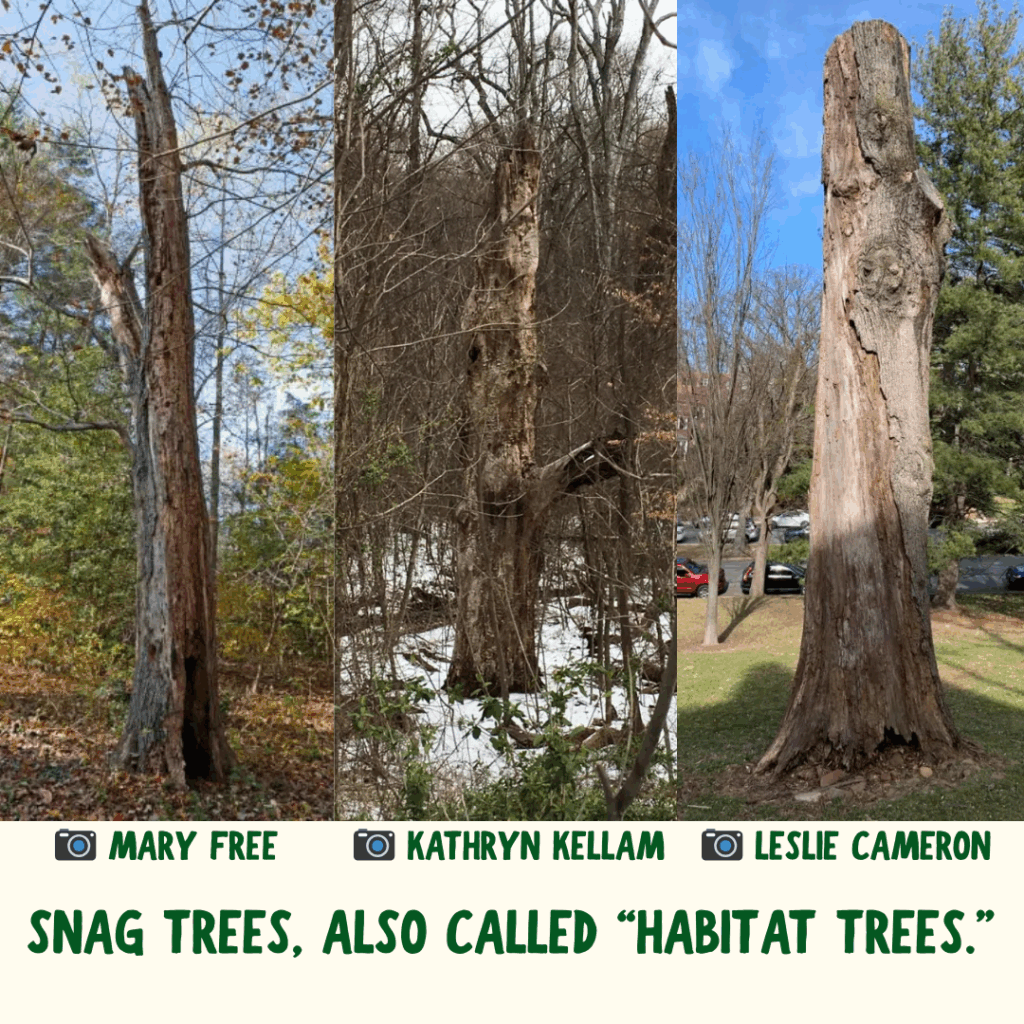
At first, all seemed well with the woodpeckers’ new nest location choice. The landowners were thrilled to see some tiny nestling woodpecker heads poke out after a few weeks.
July then did what it does best: storm. That perfect old pine suffered a dramatic fate when it was struck by lightning one summer afternoon. Yes, really! The landowners were watching the storm and saw the strike happen with their own eyes. To their horror, the tree caught on fire with the nestlings tucked inside! 😱
The rescuers sprang into action. They called the fire department, and four firefighters showed up quickly to help put out the blaze. The rescuers showed the firefighters exactly where the woodpeckers were. The firefighters were able to grab the nestlings from the burning tree just in time. All four nestlings survived, thanks to the rescuers’ quick thinking and the firefighting team’s skills! True heroes, all around. 👏🚒
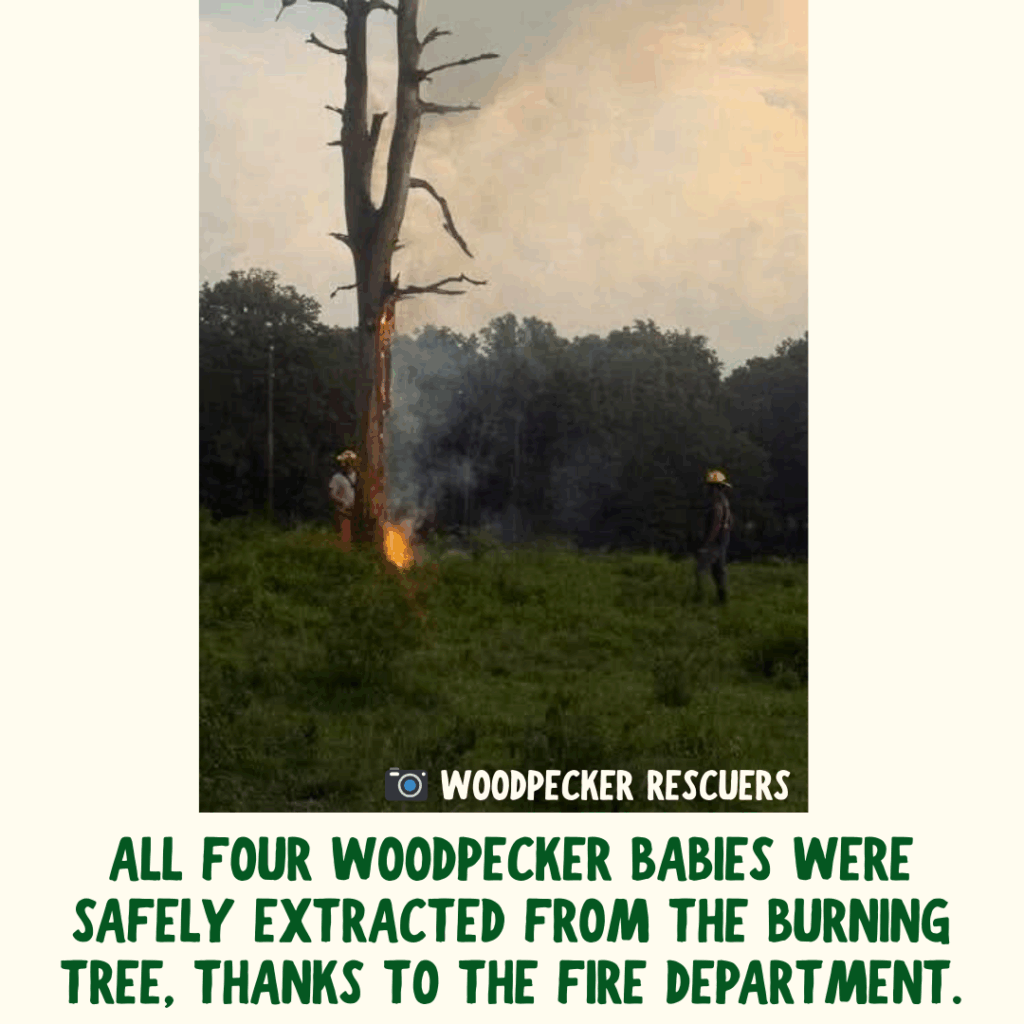
Red-headed Woodpeckers at RWS
Once the firefighters had safely removed the nestlings from the tree, their rescuers attempted re-nesting them for about 12 hours. Unfortunately, the adult Red-headed Woodpeckers did not return to care for the babies. We can understand why, though, seeing as their house was, you know, struck by lightning. 😅
The rescuers then called our wildlife hotline at the Sanctuary and drove the nestlings into our professional care shortly thereafter. Our team got to work getting these baby Red-headed Woodpeckers the treatment they needed.
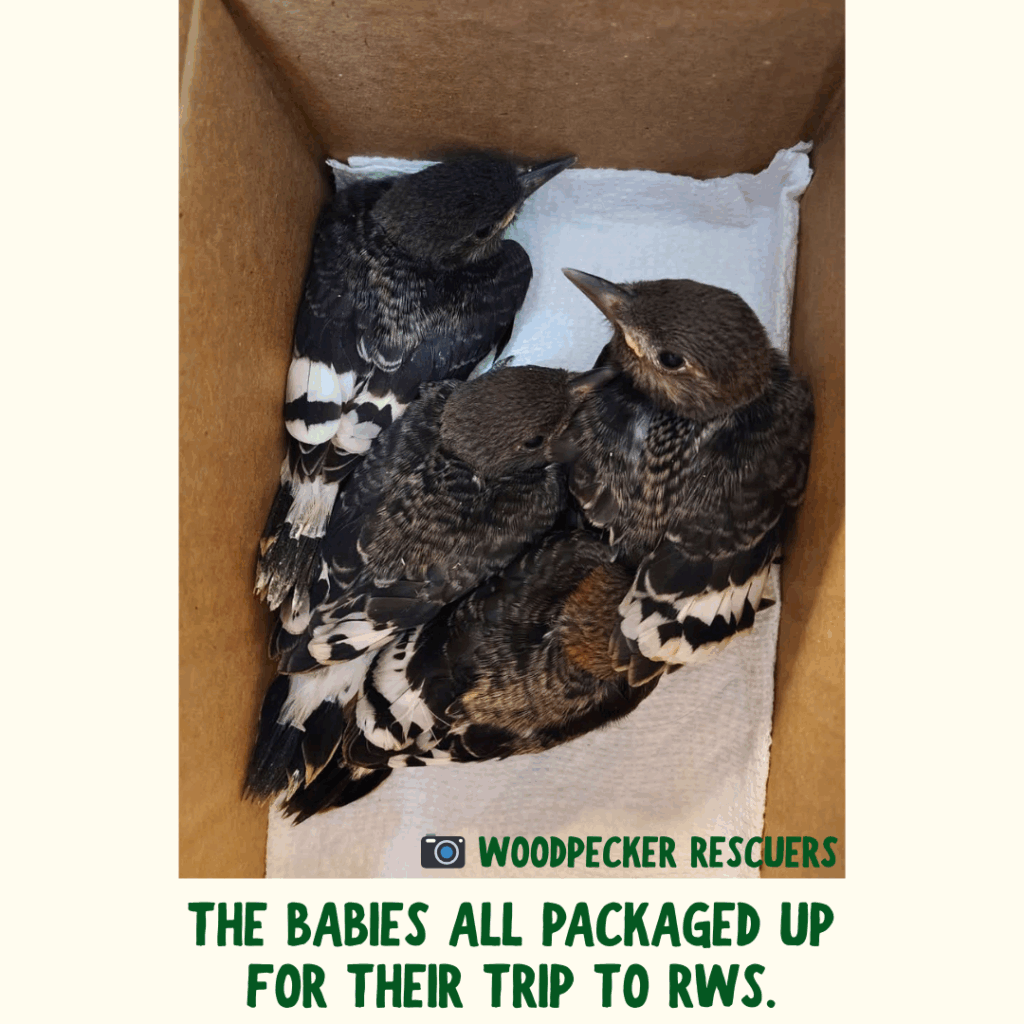
Red-headed Woodpeckers (Melanerpes erythrocephalus) are a very unusual species to admit in wildlife rehabilitation. First, it’s a species in decline. Red-headed Woodpeckers have lost 50% of their population since 1970, and they’re listed as a Tipping Point species by the 2025 State of the Birds Report. That means they’re projected to lose another 50% of their population in the next 50 years if environmental pressures like habitat loss continue without intervention. 📉
Additionally, these beautiful scarlet-capped birds are primarily found in hardwood forests and rely on dead trees to nest, for the most part. As forests decline and folks in urban and suburban neighborhoods cut down dead and dying trees, Red-headed Woodpeckers have become a rare sight in many parts of their range. ☹️

Before these four, RWS had only ever admitted four other Red-headed Woodpeckers across our organization’s 20-year history. Patients 25-542, 543, 544, and 545 were a big surprise!
Caring for Red-headed Woodpeckers
Upon intake, our team of licensed wildlife rehabbers first performed a physical exam. Miraculously, the nestlings seemed quite healthy apart from some mild dehydration. We then banded the four nestlings so we could more easily tell individuals apart and monitor their health during care. We set them up in our nursery’s specialized woodpecker box, which mimics the natural feeling of being inside a hollow tree. After rehydrating all four with some oral electrolytes, we transitioned them onto mealworms and crickets every 30 minutes, all day long. They perked right up! 🦗

Fun fact: in addition to their swanky wooden enclosure, woodpeckers (of any species) cannot have any looped cloth material in their setups. That’s because they have tiny barbs along their tongues, which allow them to grab insects from deep inside of holes they drill. 👅 In captive care, a woodpecker could easily get its tongue stuck onto cloth. Thus, their enclosure “furnishings” can only have newspaper, paper towels, and of course, some dead leaves and small branches.
After about 10 days inside our nursery, the quartet was ready to move to our outdoor flight enclosure. This required a bit of a bird shuffle! Red-headed Woodpeckers are best housed without other species, so we first moved the fledgling songbirds from our fledgling enclosure into our Chimney Swift enclosure. Our cohort of Chimney Swifts didn’t mind the company, and the robins, finches, and mockingbirds enjoyed flying laps around their new enclosure. In turn, this freed up our usual fledgling enclosure for the woodpeckers. We made sure to deck it out with extra logs and native tree clippings. 🪵
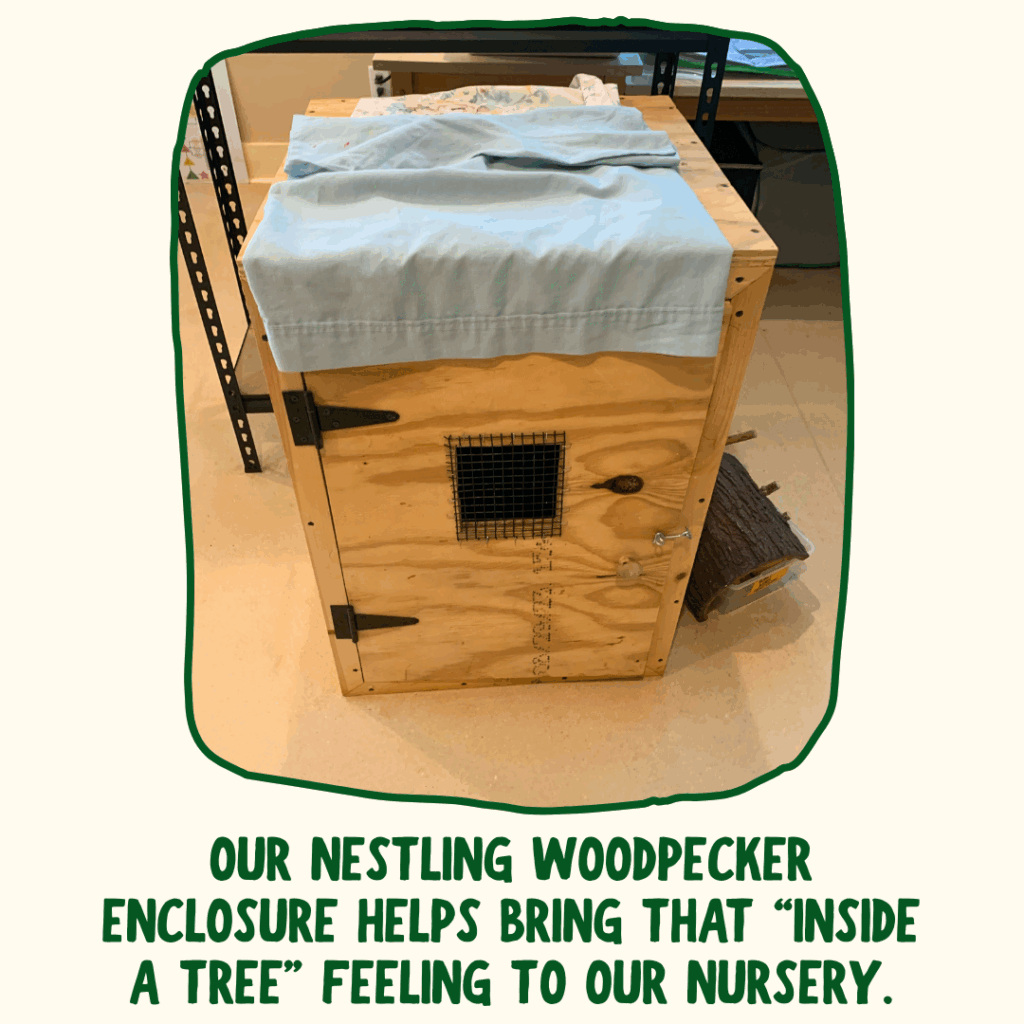
Feeding Baby Woodpeckers
Luckily, the woodpecker squad quickly picked up on self-feeding. They relentlessly searched the nooks and crannies of their enclosure for bugs. We plowed through insects to keep them fueled. 🪱
In the three weeks the woodpeckers were in care, we cleared through about 150,000 mealworms and 12,000 crickets to feed them and the other insectivores on site.
The quartet also developed another important survival skill: disliking humans. 😆 That’s why we don’t have any photos of them while they were in care. Their naturally elusive nature meant they were higher-stress patients, so we minimized contact with them beyond what was necessary for appropriate care. We purposefully did not take any photos as a result. Juveniles don’t develop those gorgeous deep red head feathers until late winter, either. By the time they were ready for release, they still looked much like they had at intake — which is to say, very charming.
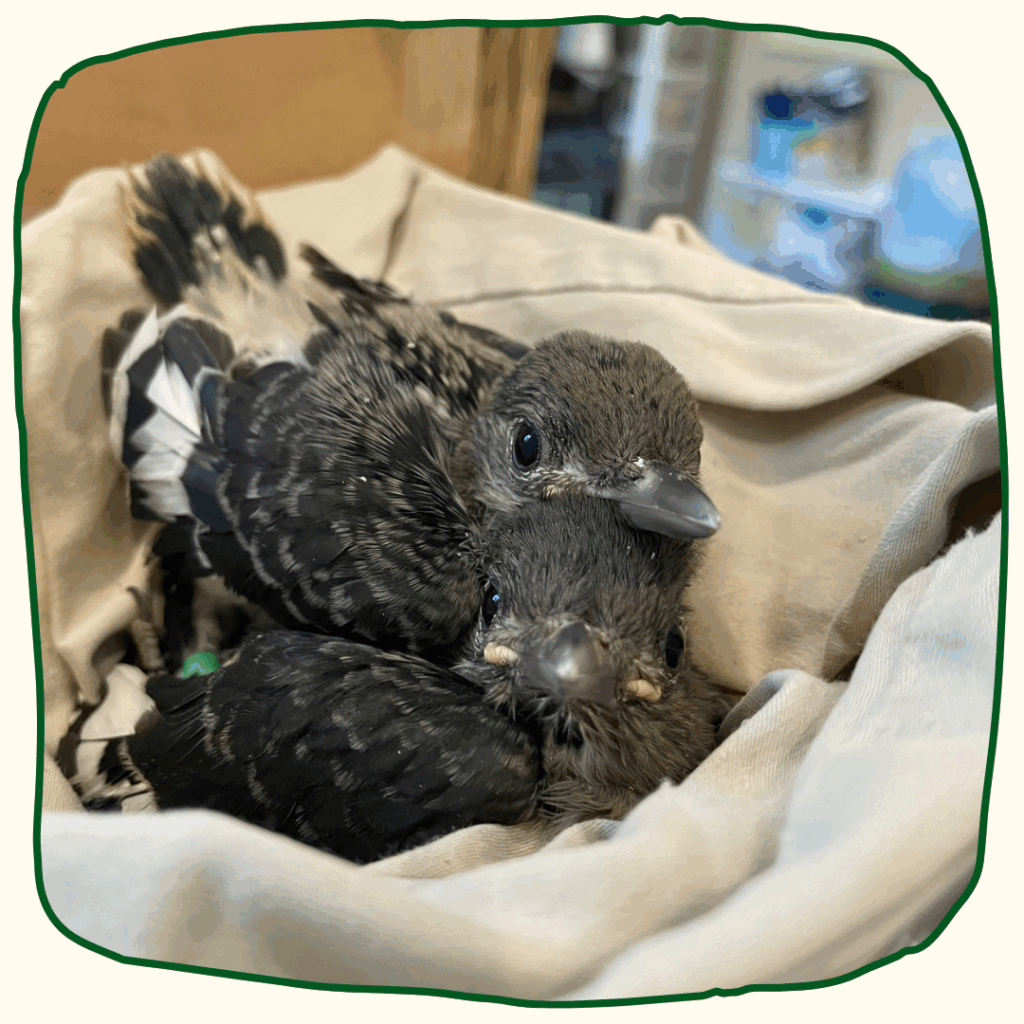
A Beautiful Ending!
And, speaking of release: after flight testing, a final physical exam, and taking off their bands, these unique patients were ready for their freedom flight. Their same rescuers came to RWS to pick them up, boxed individually to prevent sibling squabbles on the drive. 🚙
We were thrilled when the rescuers called us later that day to report that the four woodpeckers had instantly flown off into the forest, with zero hesitation. It’s like they knew they were home! ❤️
Their rescuers-turned-releasers had the following to share:
“We consider the fact that all four survived their home being struck by lightning, a smoky fire, and the shock of the tree hitting the ground to be quite remarkable. Then being able to release them back to their home territory with a chance to thrive and live was truly gratifying. They appeared healthy and vigorous and we are looking forward to seeing them out here on the farm. We want to thank you and your team for helping us achieve a positive outcome.”
Goodness, don’t mind us getting teary over here! 🥹 We are so grateful to these rescuers for saving the four woodpeckers and ensuring they got their second chance.
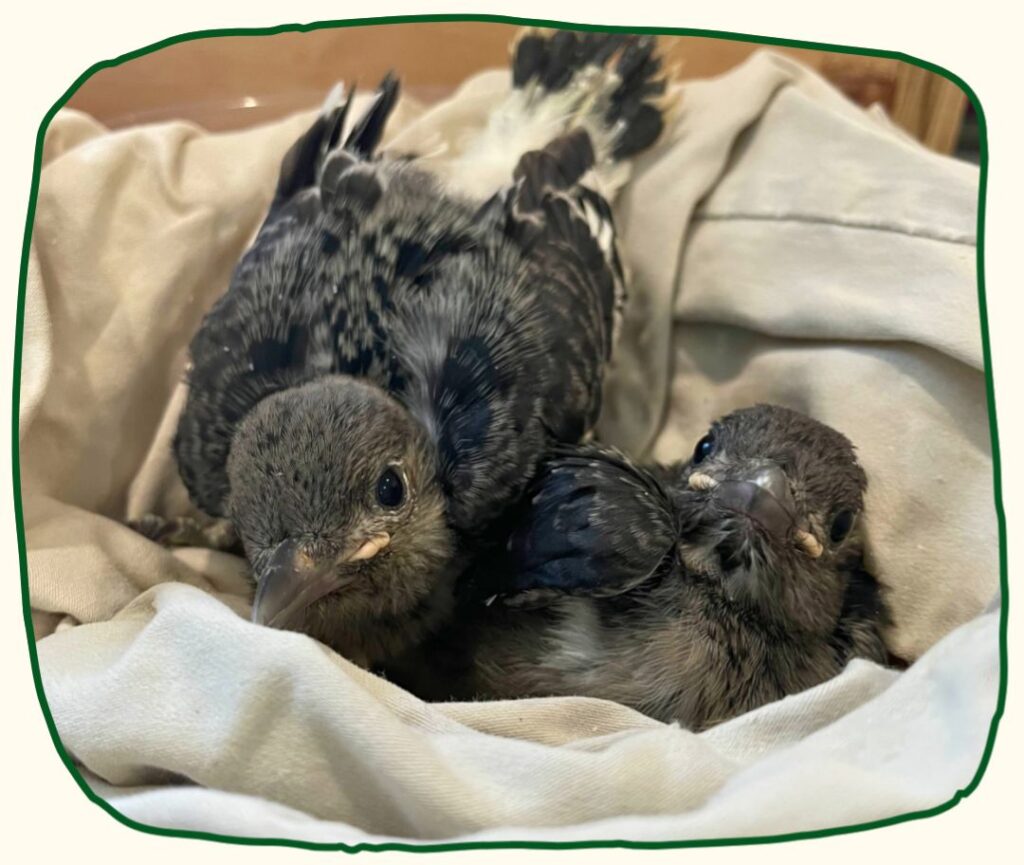
In fact, these success stories are only possible thanks to those who go out of their way to help animals in need and those who generously support us. 💪 Thank you!
We hope you enjoyed reading about our Patient of the Month…and steer clear of lightning, while you’re at it! ⛈️
Would you like to support patients like these? Your tax-deductible donation to RWS helps us provide professional, compassionate care for every animal.
August 19, 2025
Published:
Be the first to comment!